Big city buzz is fabulous – in small doses. Small towns stole my heart a long time ago.

Road trips through South Africa over many years have taken me and #him to some of the loveliest small towns. Here are some of our favourites. Much of this is based on what has turned out to be my record on Instagram.
De Rust (Succulent Karoo, Western Cape)
I’ve arranged the towns alphabetically, but I’m putting De Rust first as it’s at the top of my personal list; plus, it’s the Western Cape finalist in the 2024 Kwêla Town of the Year competition.

This dorpie (“little town” in Afrikaans) draws us back, again and again. Summers are crispy-dry hot (think 45C) and winters are cold.
You always find a new route to walk in the mountains surrounding the town, marvelling at actual forests of spekboom and more varieties of tiny succulents than you ever thought possible, everything covered with bloom. I’ve seen an owl in the daytime in an old river bed and hives of wild bees dripping with honey. I’ve rested with a glass of wine in a warm pool next to a fire at night. Even on the hottest summer day, I have lingered and been refreshed.
You meet the friendliest people in the restaurants, coffee shops and pubs that line the main road. If you feel the need to venture further, no problem: De Rust is situated where the Great (Groot) and Little (Klein) Karoo meet. The town is close to Meiringspoort and its waterfall, the Cango Caves and the magnificent Swartberg Pass, among other gems. It’s within easy reach of a myriad of other small towns worth exploring, like Willowmore, Prince Albert, Oudtshoorn and Calitzdorp. And the Garden Route and its beaches are just over an hour away: to get there, you wind your way through the Outeniqua Pass and one of the prettiest valleys you’ll ever see.
For more things to do in this dorpie, check out my post, All roads lead to De Rust.
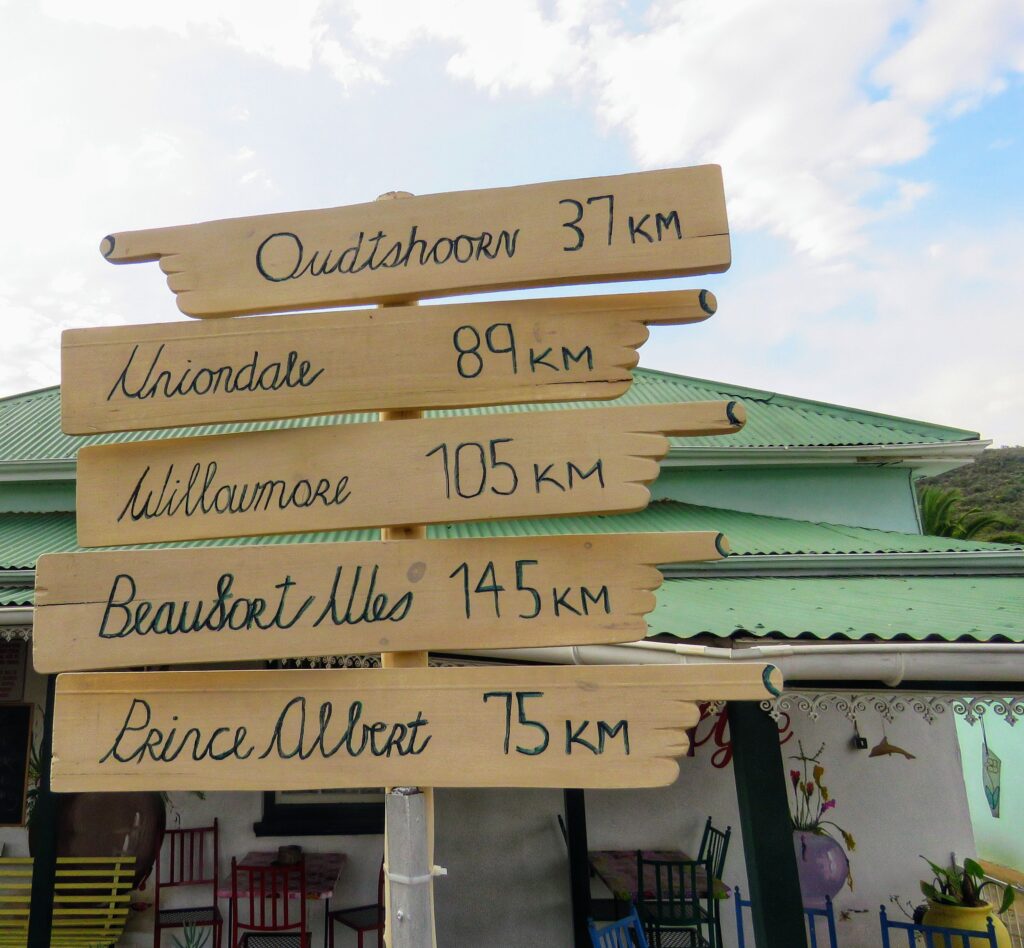
Chintsa (Eastern Cape eastern coastline)
Chintsa (East, West and Bay) is close to where we live, and we wander over, perhaps passing a clutch of nosy giraffes at Areena, at least a couple of times a month. We may meet friends for lunch at any of the range of eateries, like Emerald Vale or Tea in the Trees. We may stroll along the long beach: left is about 17km of wide sand that takes you past places like Viskop; right is a rockier walk of coves and a tidal pool. There’s a heap of other things to do, like golfing, clay painting, horse riding, pampering at a spa, and going to markets that pop up now and then. Or just enjoy the slightly irreverent vibe.

Hogsback (Amathole Mountains, Eastern Cape)
Hogsback feels like an English village that got lost and landed in the mountains of the Eastern Cape. It’s known for its abundant spring and summer display of bloom as much as its leaf colour in autumn and snowfall in winter – the latter are fairly alien in much of the Eastern Cape.
There are walks for all levels of fitness and desire, and quite a few take you to waterfalls. Among these is the Madonna and Child. You scurry 460m down a mountain to find a mother and her child protruding from the rockface, constantly washed by water. She takes your breath away. In summer, you might seek out the swimming pool further down the stream. In the cooler months, you will linger a while and then climb back to the road. It’s easier to get to the 39 Steps waterfall in the lovely arboretum.
Late spring is a glorious time to visit. The flowers burst and the colours glow. This agapanthus smiles in joy against a backdrop of watsonia, proud and tall. The labyrinth at The Edge, which twists and turns for 1.4km to the centre and back, is a good place to soak it in.
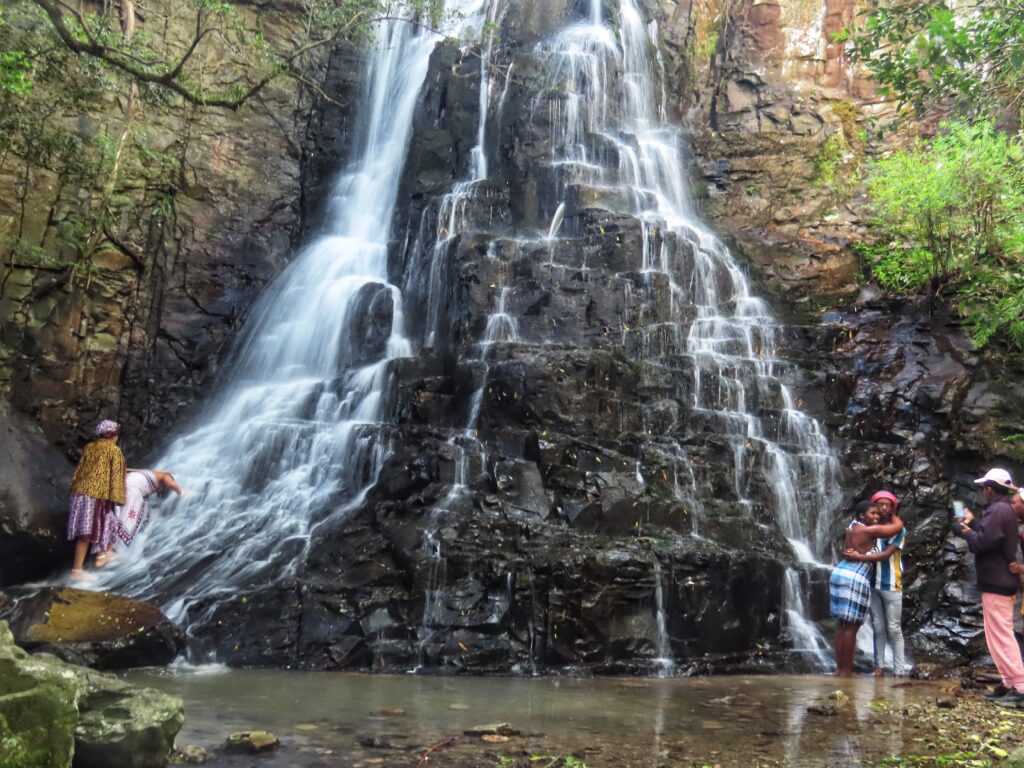
Keurbooms (Western Cape, Garden Route)
Plettenberg Bay is a pleasant surprise, and walking the Robberg Peninsula presents you with spectacular sights. Keurbooms, closer to The Crags and Nature’s Valley, is a more low-key delight. With fewer crowds and an interesting beach that demands good timing for a walk, it speaks more coherently to my Wild Coast roots. The short walk to Arch Rock (apparently also known as Cathedral Rock) at Keurbooms is now one of my all-time favourites. You marvel at the rock formations, masses of mussels on pure quartz and views across the bluest of blue. There’s also a Blue Flag beach, complete with a shark bite kit (a reminder of the spate of shark attacks around Plett).
We were lucky that the pizza spot we wanted to eat at on a Saturday night was full – it meant we got to spend more time at our little rental on the top of a hill, looking out across the bay towards Robberg and watching school after school of dolphins go by.
McGregor (Western Cape winelands)
On our first visit to McGregor, I swore some kind of magic had taken us there. We arrived on a Sunday afternoon and took a stroll down the main road – called Voortrekker (every small town has one, it seems). It was a slow amble because we stopped to adore the cute houses and buildings that line the main drag, and everyone greeted us. Then along came a full brass band, marching from a side street and followed by a lone Rasta man. We found out later – at one of the Sunday Suppers my friend used to throw – that this was a funeral and the process was quite normal.
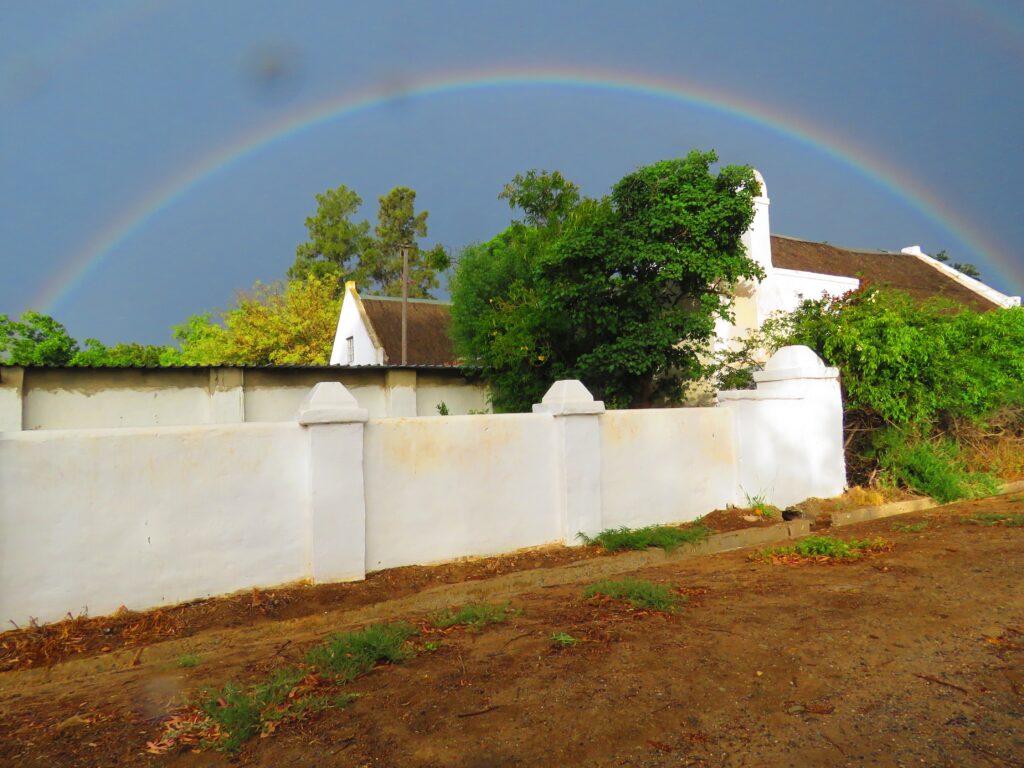
The Road to Nowhere was just as much of a surprise the first time we ventured along it. The road, I’m told, was meant to link McGregor with Greyton on the other side of the mountain, but for whatever reason, ran out of steam at the top. Never mind, it winds through proteas and other flowers and past a fab winery (one of many).
On your way to McGregor from the Cape Town side, you would do well to stop at the Karoo National Botanical Garden in Worcester. It is the only truly succulent garden in the Southern Hemisphere, and it is magnificent!
Montagu (Route 62, Western Cape)
So many small towns have been lost in frenetic trendiness. Not Montagu at the western edge of the Little Karoo. It has retained its small-town gentle charm. People smile and stop to chat when you walk around the town (you can walk just about anywhere here). Wandering past rows of historic buildings, you might pause to take in the blue house that was a hospital during the Spanish flu epidemic in the 1920s, then a brothel, then a convenience store, and now someone’s home.

The Montagu Nature Garden symbolises the spirit of this town. Volunteers run the garden, and the municipality supports it by providing workers on some days. Anyone can enter: if you can afford to donate, it’s welcome; if you can’t, you are still welcome.
And as the sun is about to set over the Langeberg Mountains, you could do worse than rest on the terrace of the Montagu Country Hotel with something warm or cold.
Nieu-Bethesda (Eastern Cape Karoo)
It’s fair to say that Nieu-Bethesda revolves around the Owl House that Helen Martins created. It’s often described as a macabre place of dark energy. I have experienced it, years apart, as exactly the opposite – as a place of light and colour, with even the doors and ceilings coated with crushed glass. Perhaps this was indeed to counter Miss Helen’s sadness, but the result is an offbeat joy, a defiance of a village that more or less isolated her. And friends talk of her life being full of wonder and ecstasy, not just sadness. They talk of her sharp wit (maybe apparent in the Honeymoon Room, where two dolls lie on one of two single beds) and zest for living. And there are some sharp edges, literally, in her art – careful what you touch; you could get hurt.
The yard is filled with a kind of exuberant procession of creatures, including worshippers facing east where the sun and moon rises, and retreats built of bottles. The dark place is the room where her father (a dark character, it seems) spent the final years of his life – it has no windows, and the walls are covered with crushed black glass. You’ll notice a sculpture or two facing this room, not with arms outstretched but with hands pushing something bad away.
Miss Helen became deeply depressed when she started losing her sight. She wrote to a friend:
Now, darling, as you get older, you realize that dying (underlined) isn’t the problem …. living (underlined) is the problem. That is why you have got to live well and to the full. My agony would be to ‘live dying’ without being able to work.
She took her own life at the age of 78. She left us something incredible. It’s so worth the journey to get here to experience it.
Of course, the town offers a lot more than the Owl House. From the Kitching Fossil Exploration Centre, for example, venture to the smooth rocks in the river to find the imprints of ancient creatures. Browse the creations of street artists, like Dylan Steer. Walk the labyrinth at the heart of the beautiful garden that surrounds the Gregg Price Gallery.
Niewoudtville (Namakwa, Northern Cape)
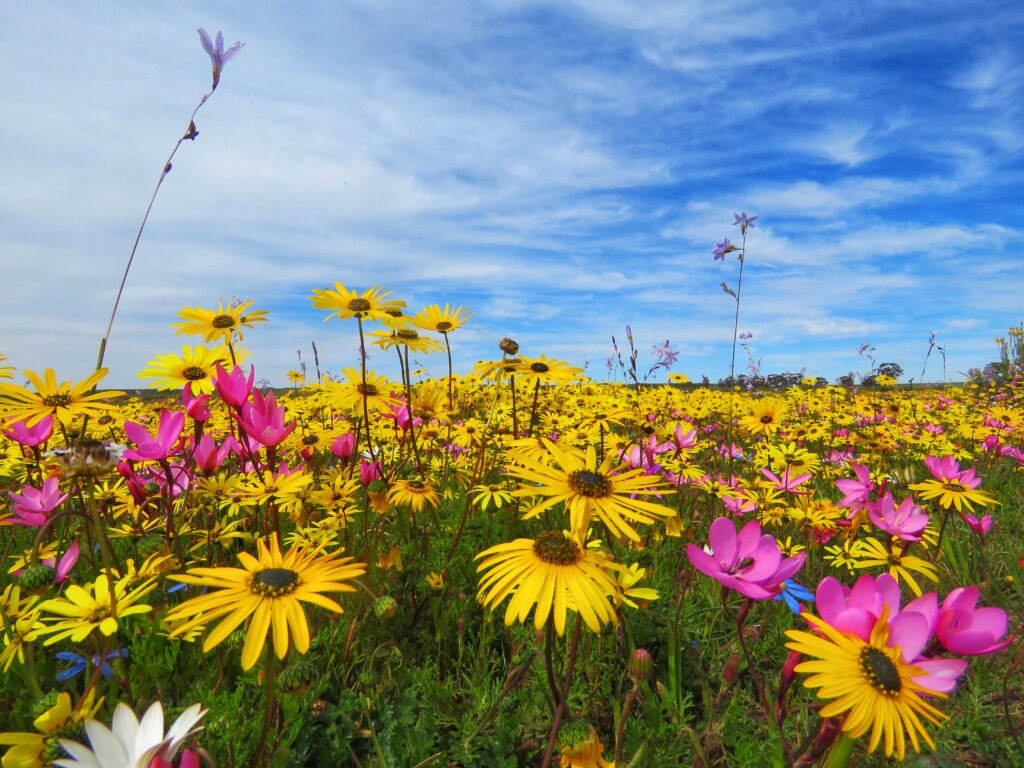
We’ve been to this tiny town more times than I can remember, always in search of spring flowers. The first time, in a devastating drought, we found one flower – you can read about that here – and a town of desolation. Apparently, I bought the last jar of honey at the church hall (there were no flowers for the bees), and the Hantam National Botanical Garden let us in for free (this is where we found that solitary flower).
But we returned, year after year, a little wiser each time but like drunken fools, it seemed at times. And we were rewarded by the spring spectacle over and over. There’s also a lovely humour that sneaks its head out. I’m not sure I’d particularly want to visit out of flower season, but I have a friend who loves spending time there whenever she can.
The towns of the Overberg (Western Cape)
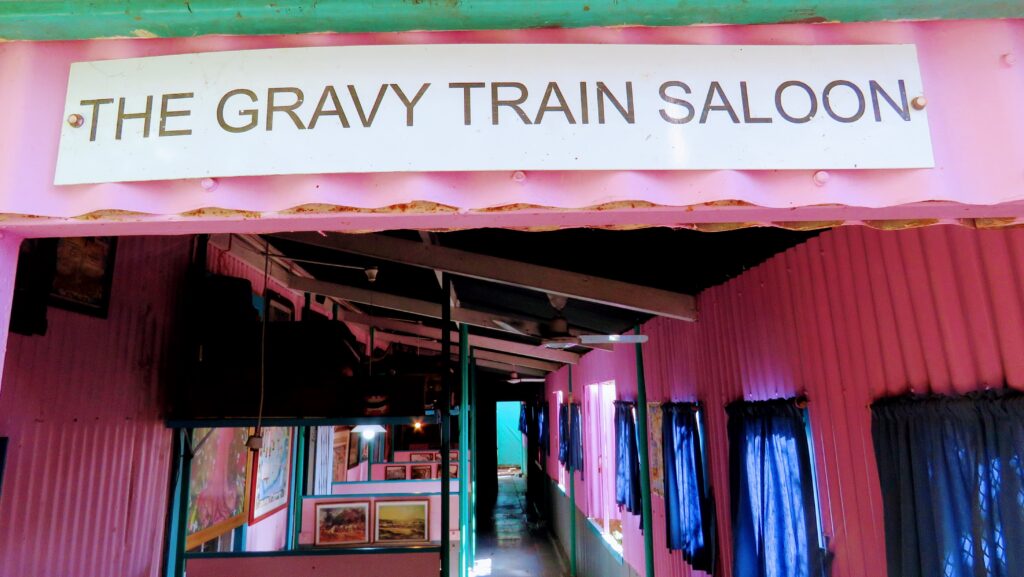
I can’t choose just one – they are all gems. Chill in Napier; slow right down and cosy up next to a wood fire with good people and good wine. Straddle the Indian and Atlantic Oceans at the point where they meet at Agulhus.

Linger in unpretentious and pretty Gansbaai. Soak in the charm of Arniston. Wander through the Fernkloof Nature Reserve at Hermanus. Watch the fishermen and birds come in with their catch at Struisbaai. And do dance on tables.
Rhodes Village (Eastern Cape highlands)
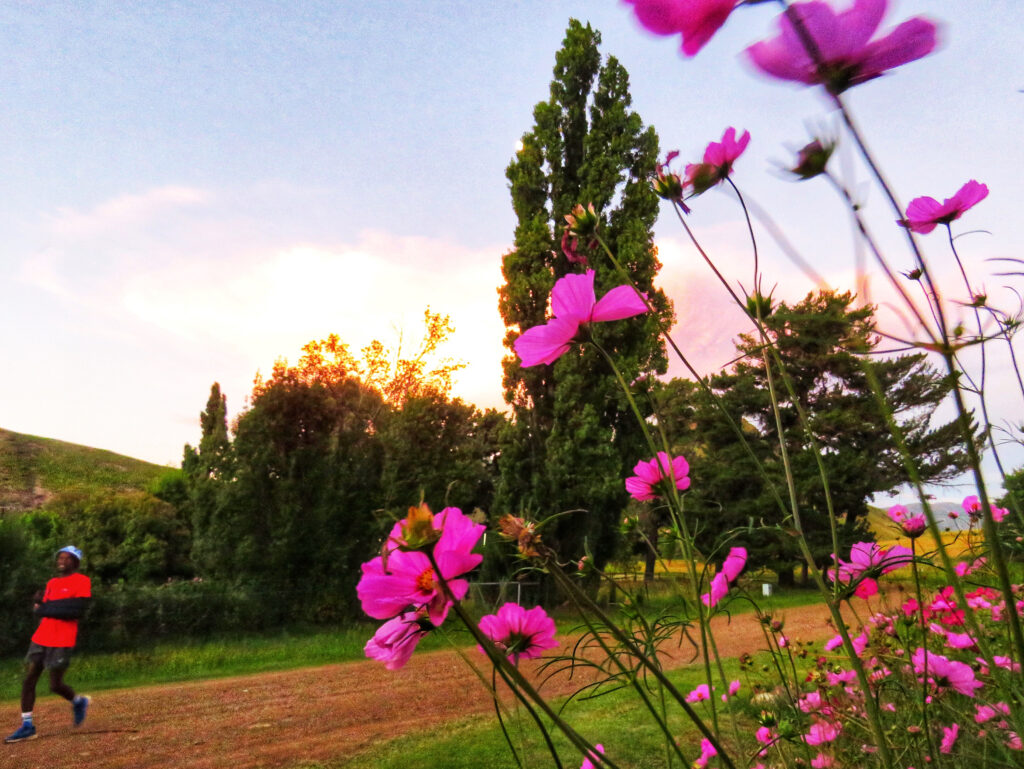
Rhodes Village nestles in the mountains near the Lesotho borders. I outlined Eight things I love about Rhodes Village, and one of them was the generosity of spirit in this place of wide open spaces and big skies. That was abundantly evident in the early days of the COVID-19 lockdown when a group of residents got together to make face masks and distribute them, all for free.
I was lucky enough to be in the village for the first Rhodes Stoepsitfees (Afrikaans for “festival of sitting on the porch”). You pop in and “kuier” (visit) with your neighbours, drink tea and eat cake, and chat and watch the world go by. It’s a reawakening of a gentle tradition that is lost in the busyness of life. There is more, of course: walks every which way, historic buildings and ancient rock formations. The event calendar is growing: Rhodes has just hosted its very first Fibre and Fabric Fair, drawing visitors from far and wide.
Sutherland (Northern Cape, Karoo highlands)
We went to Sutherland, the coldest town in South Africa, to see stars. We found a lot more. We stargazed in sub-zero temperatures, enraptured by the magnificence (even against the haze that we learned was light pollution from Cape Town). And we caught a show at the planetarium.

We wandered the length and breadth of the town that started with the construction of the NG Klerk in 1855. Old cars feature a lot. They are in various stages of decay, repair and shape (there is even a rendition of a hotdog man). We lingered in a warm pub with warm people, and curled up in front of a fire in the beautiful old Karoo home we had rented.
Then we headed north of the town on the R354 to Calvinia. Sutherlanders had warned us about the dirt road that “eats tyres”. By the time we shuddered into Middelpos, my nerves were shattered (#him seemed immune). A few people leaned against a wall near the hotel; they looked very tired. We headed for the tearoom and were halted by a sign that read in Afrikaans: “No entry to pyjama walkers [they mean people wearing pyjamas – it’s a thing]. We assume you are walking in your sleep and don’t know what you are doing. So come buy if you are awake again.” A second sign warned: “The mother whose child ever sucks (puts their lips on) the window again must clean it up.”
Tulbagh (Boland, Western Cape)
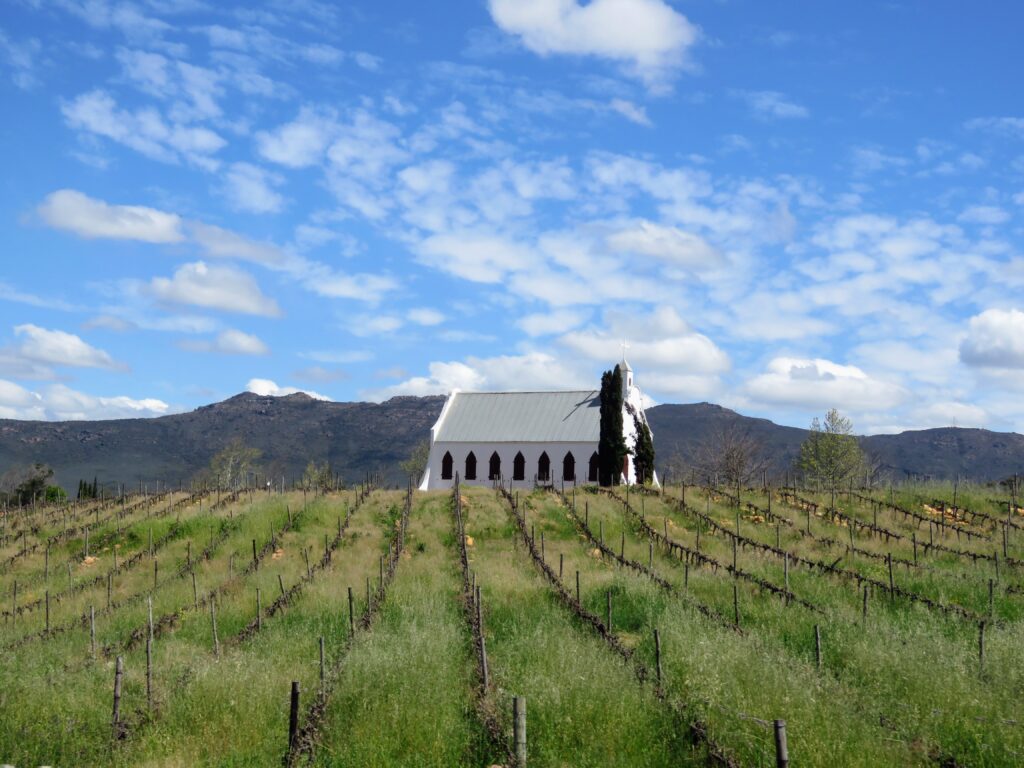
Tulbagh, South Africa’s fourth-oldest town, dates from the early 1700s, and much of it was devastated by an earthquake in 1969. A massive effort of rebuilding and restoring followed, and today, the town’s Church Street is said to have the most Cape Dutch, Edwardian and Victorian buildings in one street in the country. It is, indeed, a treat to wander up and down Church Street and immerse yourself in the architecture – the youngest building, the Earthquake Museum, was built in 1899.
At the end of the street, meander into the Church Street Kitchen Gardens. Vegetables, herbs and flowers grow in joyful abandon between paths covered with peach pips. For a small fee, you can pick your own bag of organic healthiness.
About a dozen wine estates grace the area, and we loved every one we visited. Saronsberg, apart from great wine, houses a formidable collection of art, including “monumental” sculptures by Angus Taylor. Then you could try an olive oil tasting at Oakhurst on the mountain slopes and sweeten up at the Farmyard Honey Factory near Wolseley.
And other gems
My list is just that – mine – and you can tell that I have been biased towards the regions I know best. There are many other small towns that I have visited and would write about them if I spent enough time in them. Here are a few:
- Kenton, Eastern Cape, for its astonishing beaches
- Citrusdal, Western Cape, for its flowers and quietness
- Lambert’s Bay, West Coast, for its gannets and West Coast charm
- Doringsbaai, West Coast, for its wine and fishing people and their yarns
- Calitzdorp, Western Cape, for its wine and old buildings
- Kaapsehoop, Mpumalanga, for its quaintness among the forests
- Salt Rock, KwaZulu-Natal, for its beaches and birds
- Darling, Western Cape, for its flowers, wine, olives and Evita museum
- Wilderness, Garden Route, for its views, beaches and walks
- Any of the small towns near Upington and the Augrabies Falls
Til next time. People to see; places to go.
*This post was first published in September 2024. Hackers wiped out some of my work to replace it with adverts for sex drugs. Fancy that! They thought my blog would get them attention. I wish them bad things.




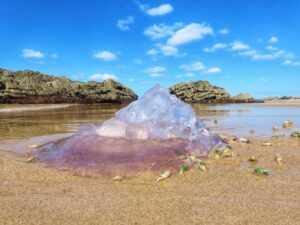

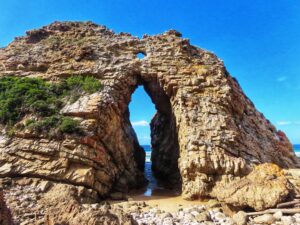

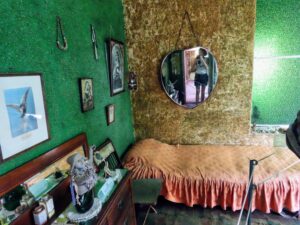




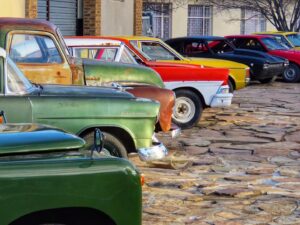




Hi ,
I have not been to the Eastern Cape for many years , ( Was my favorite in RSA )
I am thinking of visiting , Is it reasonably safe ?
I have heard that Eastern Cape and around East London has the worst crime stats in SA ?
Is there any truth in that , seems hard for me to believe , have not been back for about 30 years ?
Thanks
Alan
Hi Alan. I’m not aware of the Eastern Cape and around East London having the worst crime stats – and I’ve been wandering around this area for many years! In fact, I’d venture that it’s safer than the bigger cities. I think the same guidance applies anywhere: be vigilant; don’t flash expensive possessions; be polite. And in the rural Eastern Cape, I would add: NEVER drive at night. And I say that more because of strays and bad drivers with broken lights than dangerous people. It’s 100% worth visiting the Eastern Cape – such an underrated, beautiful area. Happy travelling!